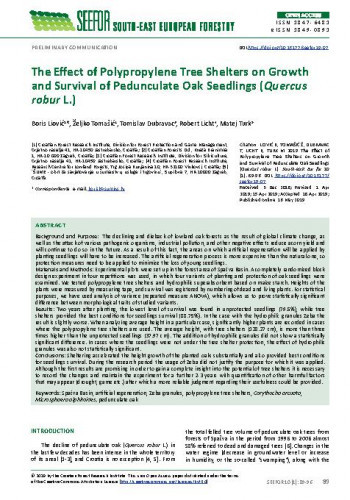Background and Purpose: The declining and dieback of lowland oak forests as the result of global climate change, as well as the attack of various pathogenic organisms, industrial pollution, and other negative effects reduce acorn yield and will continue to do so in the future. As a result of this fact, the areas on which artificial regeneration will be applied by planting seedlings will have to be increased. The artificial regeneration process is more expensive than the natural one, so protection measures need to be applied to minimize the loss of young seedlings. Materials and Methods: Experimental plots were set up in the forest area of Spačva Basin. A completely randomized block design experiment in four repetitions was used, in which four variants of planting and protection of oak seedlings were examined. We tested polypropylene tree shelters and hydrophilic superabsorbent based on maize starch. Heights of the plants were measured by measuring tape, and survival was registered by numbering of dead and living plants. For statistical purposes, we have used analysis of variance (repeated measure ANOVA), which allows us to prove statistically significant difference between morphological traits of studied variants. Results: Two years after planting, the lowest level of survival was found in unprotected seedlings (79.5%), while tree shelters provided the best conditions for seedlings survival (88.75%). In the case with the hydrophilic granules Zeba the result is slightly worse. When analyzing average height in a particular case, significantly higher plants are recorded in cases where the polypropylene tree shelters are used. The average height, with tree shelters (128.27 cm), is more than three times higher than the unprotected seedlings (37.97 cm).
Sažetak

 South-east European forestry : SEEFOR : international scientific journal in field of forestry : 10,1(2019) / editor-in-chief Dijana Vuletić.
South-east European forestry : SEEFOR : international scientific journal in field of forestry : 10,1(2019) / editor-in-chief Dijana Vuletić.